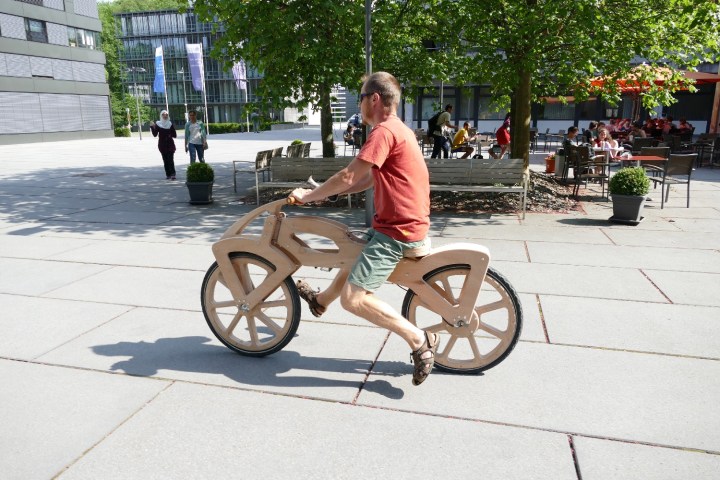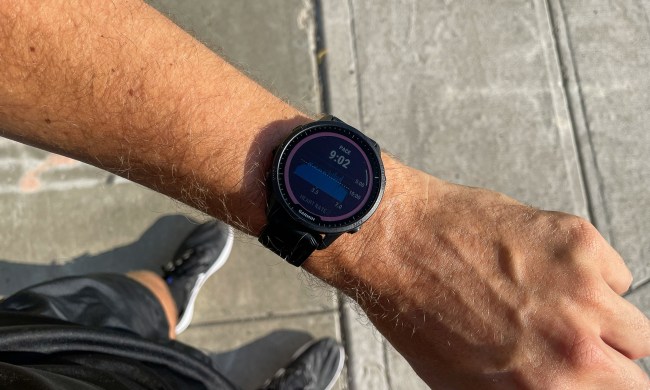
If you are a 2017 hipster in search of the ultimate vintage, nonconformist statement, you could do a lot worse than checking out the vehicle created by a team of computer scientists at Germany’s Saarland University. Combining a two-wheeled mode of transportation that precedes the bicycle with the latest Arduino tech, they have built a modern version of the draisine or “dandy horse.”
“What we have developed is a symbiosis of old and new,” Ph.D. student Gereon Fox told Digital Trends. “We took the invention that Karl Drais made in 1817: A wooden means of transportation that is propelled by pushing with your feet — and combined it with today’s electric motor support bike technology. The result is a bike that looks a bit like we stole it from a museum, but if you examine it carefully, you see all the wires and sensors, the motor, the battery, and the Raspberry Pi computer that controls the whole vehicle.”

The wooden bike uses its sensors to detect when the user pushes with his feet, in order to amplify these pushes with the motor. In terms of smart tech, it packs a 200-watt rear hub motor, a battery mounted on the frame, an accelerometer, a Raspberry Pi microcomputer, and an RPM-measuring magnetic sensor in the rear wheel.
“We built this prototype because we, as computer scientists, needed to learn how to actually program a bike,” Fox continued. “Now that we have gained some understanding of this, the next step is to evaluate the current verification technology in order to identify its weaknesses and shortcomings when it comes to applying it to a system of this complexity. We do not really aim for commercialization of a wooden Draisine because, although it has a motor, it’s still a bit harder to ride than one with proper pedals.”
In other words, you will not be able to buy it on Amazon anytime soon. But wouldn’t it kind of ruin the high-tech hipster ethos if you could?


